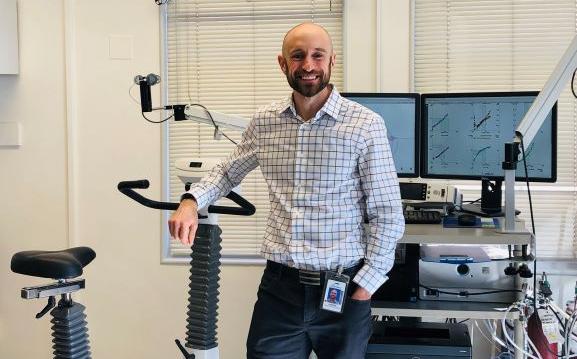The pulmonary system can maintain arterial blood gas homeostasis during exercise in healthy, young adults. However, some endurance athletes demonstrate a significant reduction in arterial oxygenation during exercise, a phenomenon termed exercise-induced arterial hypoxemia (EIAH). EIAH has been previously observed in young adults, and male masters athletes but there are no reports of gas exchange impairment in female masters athletes. It was hypothesized the majority of female masters athletes will develop EIAH during submaximal, near maximal, and maximal treadmill exercise. Pulmonary function was assessed followed by an incremental exercise test to determine maximal O2 uptake (V̇O2max). Participants were instrumented with a radial arterial catheter, an oesophageal balloon-tipped catheter, and temperature probe. Arterial samples were drawn while participants exercised at 60-70, 75, 90-95, and 100% V̇O2max for 2-4 minutes. Participants (n=6, 48-57 years) had an average V̇O2max of 47±2 ml/kg/min (range 40-55 ml/kg/min, 135-186% predicted). During submaximal, near maximal, and maximal exercise the arterial partial pressure of O2 (PaO2) decreased from rest by 14±2 mmHg (range 6-21), 13±4 (range -6-24), and 11±7 mmHg (range -7-21), respectively. The arterial partial pressure of CO2 (PaCO2) decreased from rest by 1.8±1 mmHg (range -2-6), 4±1 mmHg (range 0.3- 8), and 5±2 mmHg (range 2-5) at submaximal, near maximal, and maximal exercise, respectively. There was a reduction in oxyhemoglobin saturation 2.5± 0.3% (range 1.9-3.4) and arterial O2 content 1.2± 0.2 mL O2/100 mL of blood (range 0.7-1.8) at all intensities. Participants with a minimal change to PaCO2 tended to have a greater reduction in PaO2 (r = -0.85, R2 = 0.73, p
View record





